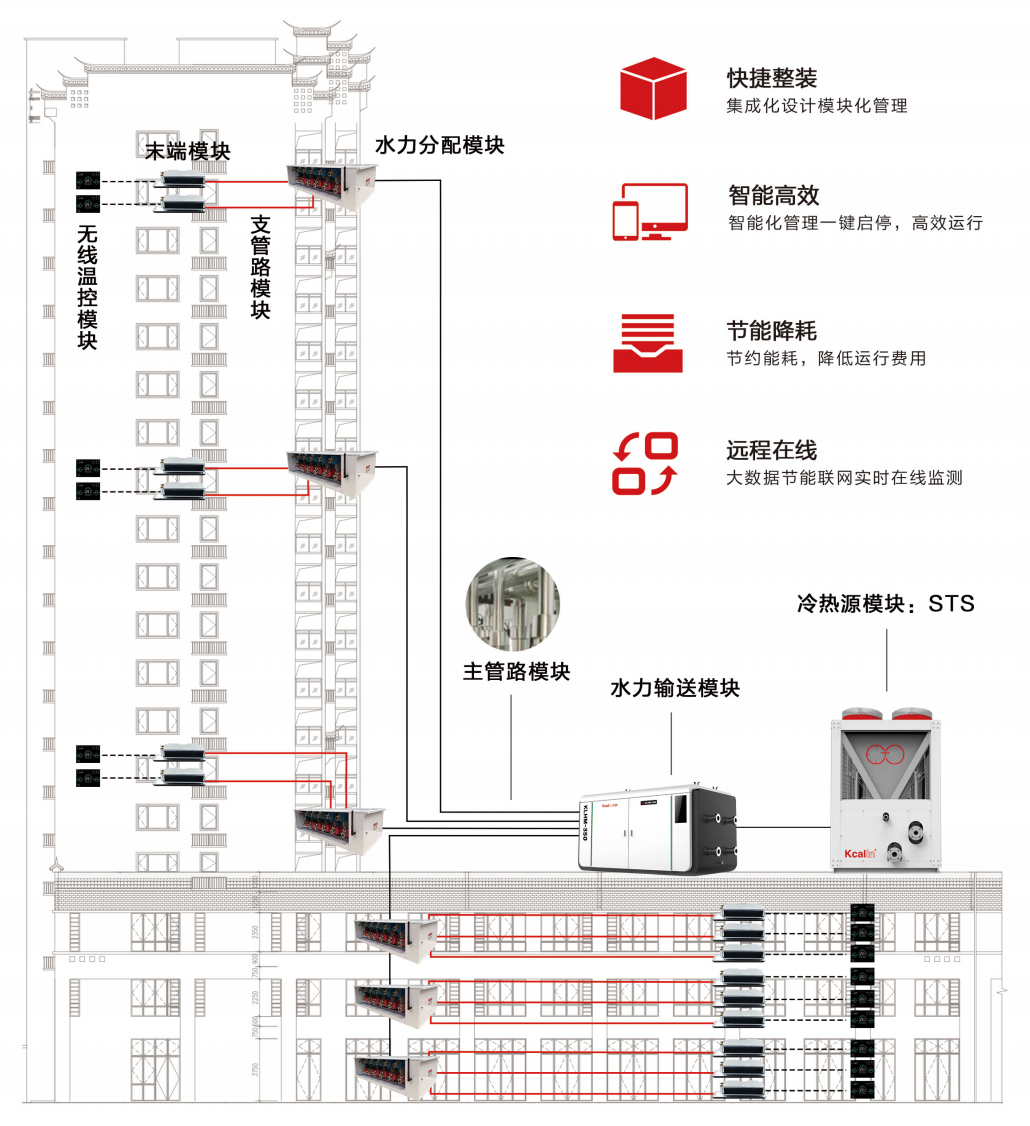With the development of modern society, people are paying more and more attention to indoor air quality and comfort. Ventilation systems play a crucial role in improving indoor air quality. This article will delve into various classified ventilation systems to inject new life into indoor air and improve the quality of living and working environments.
The ventilation system is a key component that introduces fresh air into the room and expels foul air. It not only helps to keep indoor air fresh, but also has the following important functions:
Air quality improvement: The ventilation system can effectively remove harmful gases, odors, and pollutants indoors, improve air quality, and contribute to health and comfort.
Humidity control: Proper ventilation helps to control indoor humidity, prevent the growth of mold and bacteria, and maintain a comfortable indoor environment.
Temperature regulation: The ventilation system can help regulate the indoor temperature, ensuring that the room remains warm or cool.
Energy efficiency: Carefully designed ventilation systems can improve energy efficiency, reduce heating and cooling costs, and reduce dependence on energy.
Classified ventilation system

Natural ventilation system: The natural ventilation system relies on natural airflow and introduces fresh air through structures such as windows, vents, and ventilation towers. It is suitable for areas with mild climate and fresh air, and has the advantages of low cost and environmental protection.
Mechanical ventilation system: The mechanical ventilation system uses fans and ventilation ducts to introduce fresh air into the room through mechanical means, which can achieve more precise control. This system is commonly used in commercial buildings and large industrial facilities.
Hybrid ventilation system: The hybrid ventilation system combines the advantages of natural ventilation and mechanical ventilation, and switches between different situations through intelligent control systems to greatly improve efficiency.
Fresh air system: Fresh air system is a system specifically designed to introduce fresh air, usually used in conjunction with existing air conditioning systems to ensure continuous updates of indoor air.
Local ventilation system: Local ventilation system is used in specific areas, such as kitchens and bathrooms, to remove harmful gases and odors and prevent indoor pollution.
The working principle of the ventilation system is basically to introduce fresh air into the room and exhaust dirty air. This process includes the following key steps:
Fresh air introduction: Introduce fresh air through vents, windows, or ventilation devices.
Dirty air discharge: The discharge of dirty air through vents, exhaust fans, or exhaust ducts.
Air filtration: Before introducing fresh air, dust, particulate matter, and pollutants are usually removed through an air filter.
Air circulation: The ventilation system can guide air to the required area through ducts to ensure that the entire indoor space can receive fresh air.
The function of the ventilation system is to inject fresh air into the room, just like injecting new life into the indoor air. It provides people with a fresher, healthier, and more comfortable living and working environment. Proper ventilation helps to reduce air pollution, improve indoor air quality, and thus improve quality of life and work efficiency.
Classified ventilation systems play a crucial role in improving indoor air quality, controlling temperature and humidity, and improving energy efficiency. They inject new life into indoor air and create a more comfortable and healthy living and working environment for people. In the future, ventilation systems will continue to develop to cope with constantly changing needs and environmental challenges.







Comment